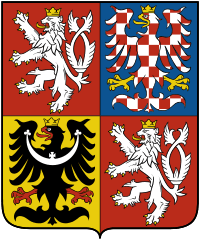| Objective of the Project |
The main objective of the project is focused on monitoring of the population of the critically endangered crayfish Austropotamobius torrentium Schrank (1803) at localities of European relevance (ERL) and the critically endangered crayfish Astacus astacus Linnaeus (1758), including monitoring of quality of their habitats. Quality of habitats of the original crayfish species is affected by hydro morphology of the river and quality of water and sediments affecting bioaccumulation of pollutants in various anatomies in the crayfish body. The main objectives of the project will be monitoring of the size of the crayfish population, quality of their habitats, their relations to the other components of the ecosystem and the options of their sustainability. Sustainability of the original crayfish population may also be affected by invasive predator animals. As the invasion of the already reproduced non-original species often cannot be prevented, it is important to teach the public about the dangers connected with spread of these species in relation to protection of the original crayfish species. Therefore project publicity, education and information of the general public will be a significant part of the proposed project.
Relation of monitoring of anthropogenic stresses and relations to ecosystem components to project activities:
• Local and overall pollution - activities: water quality monitoring, monitoring of sediment burdening with chemicals and bioaccumulation of toxic substances,
• Inappropriate river regulation - activity: mapping of hydro morphological parameters of the studied localities,
• Intense exploitation of rivers and ponds and catchment areas by fishermen - activity: mapping of the structure of fish communities,
• Spreading of geographically non-original animal species, representing a risk of transfer of disease or parasites for the autochthonous species, competition or significant predators - activity: behavioural interactions of crayfish, fish and major predators,
• Studies of relations between crayfish populations and other ecosystem components - activities: monitoring of population characteristics of crayfish, mapping of the structure of macrozoobentos communities, mapping of the structure of fish communities and behavioural interactions of crayfish, fish and major predators.
Principal project activities include:
• Behavioural interactions of crayfish, fish and major predators: Three model localities will be used for studies of behavioural interactions and relations between the numbers of prey (crayfish) and predators - fish, photo trap will be used for monitoring of activities of terrestrial predators.
• Water quality monitoring: The monitoring will focus on parameters that might threaten the original crayfish population. The parameter scope was selected from the evaluation of the national monitoring, parameters which in the years 2010 - 2012 exceeded the recommended limits at least at 5 of the monitored localities in the Czech Republic.
• Monitoring of sediment burdening with chemicals: The monitoring will focus on parameters that might threaten the original crayfish population and binding to sediments or biomass (toxic metals, pesticides, organic substances, polyaromatic hydrocarbons etc.)
• Bioaccumulation of toxic substances: The project will study accumulation of toxic metals in a mixed sample of crayfish, and further in the muscles, in the gills, in the hepatic-pancreatic tissue and in the hemolymph. Comparison of bioaccumulation of pollutants in the body of crayfish to reference localities in Norway.
• Mapping of the structure of macrozoobentos communities and fish: Quantitative and qualitative monitoring of fish communities and monitoring of macrozoobentos especially with regard to the function of food offer for crayfish population
• Monitoring of population characteristics of crayfish: Monitoring will be implemented at 13 ERL where the crayfish Austropotamobius torrentium was found (37 monitoring localities), 5 localities with occurrence of crayfish Astacus astacus (15 monitoring areas), 8 localities with invasive crayfish (24 monitoring areas) and 4 localities with extinction of the original crayfish population for unknown reasons (15 monitoring areas).
• Comparison of the methods of crayfish catching: Testing of alternative methods of specification of crayfish population size - comparison with Norwegian methods, including comparison of methods of crayfish catching in the Czech Republic and in Norway and evaluation of their success rates.
• Preparation of a proposal for management of localities with occurrence of autochthonous crayfish populations
|
|---|


